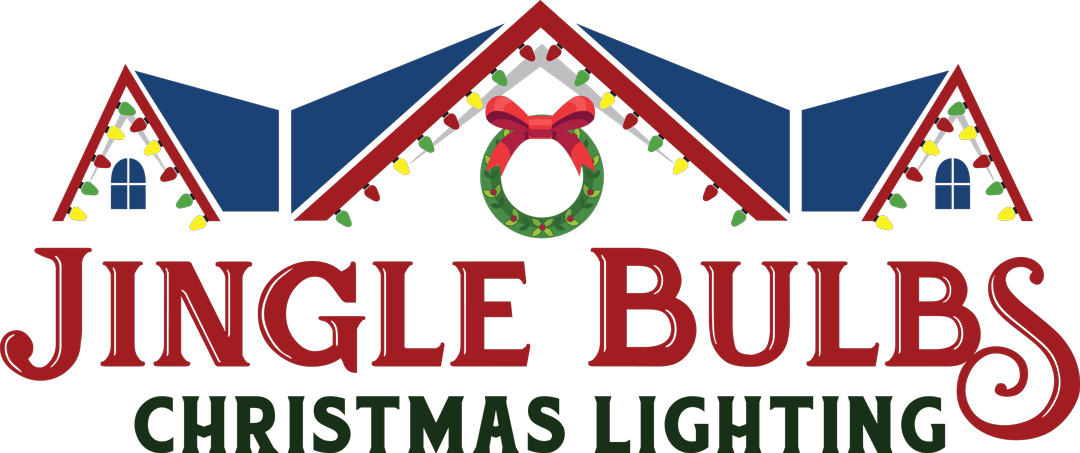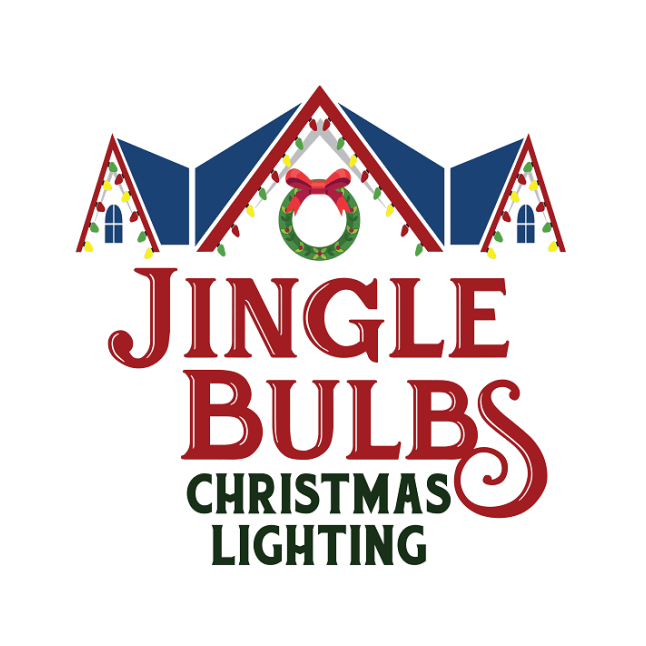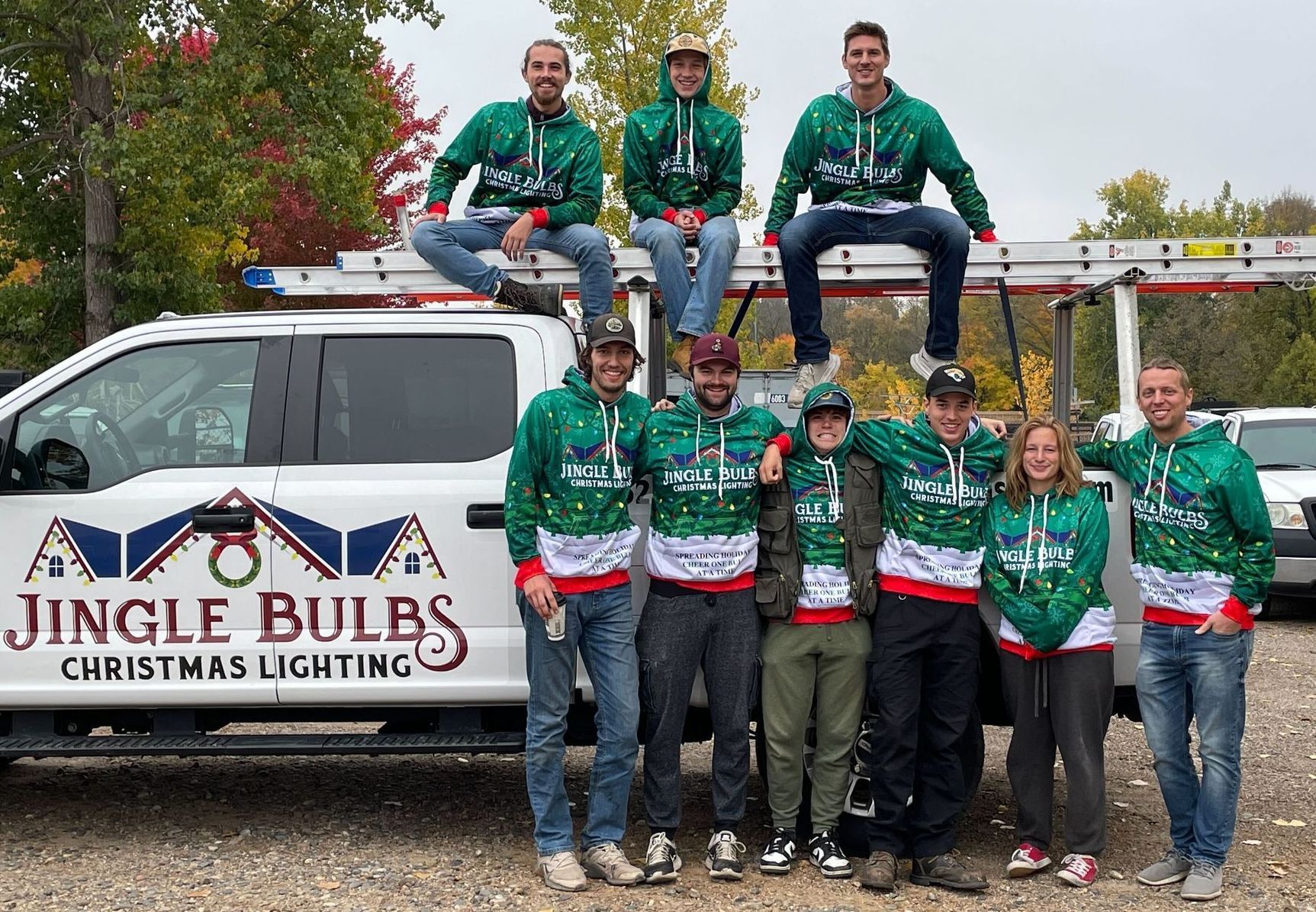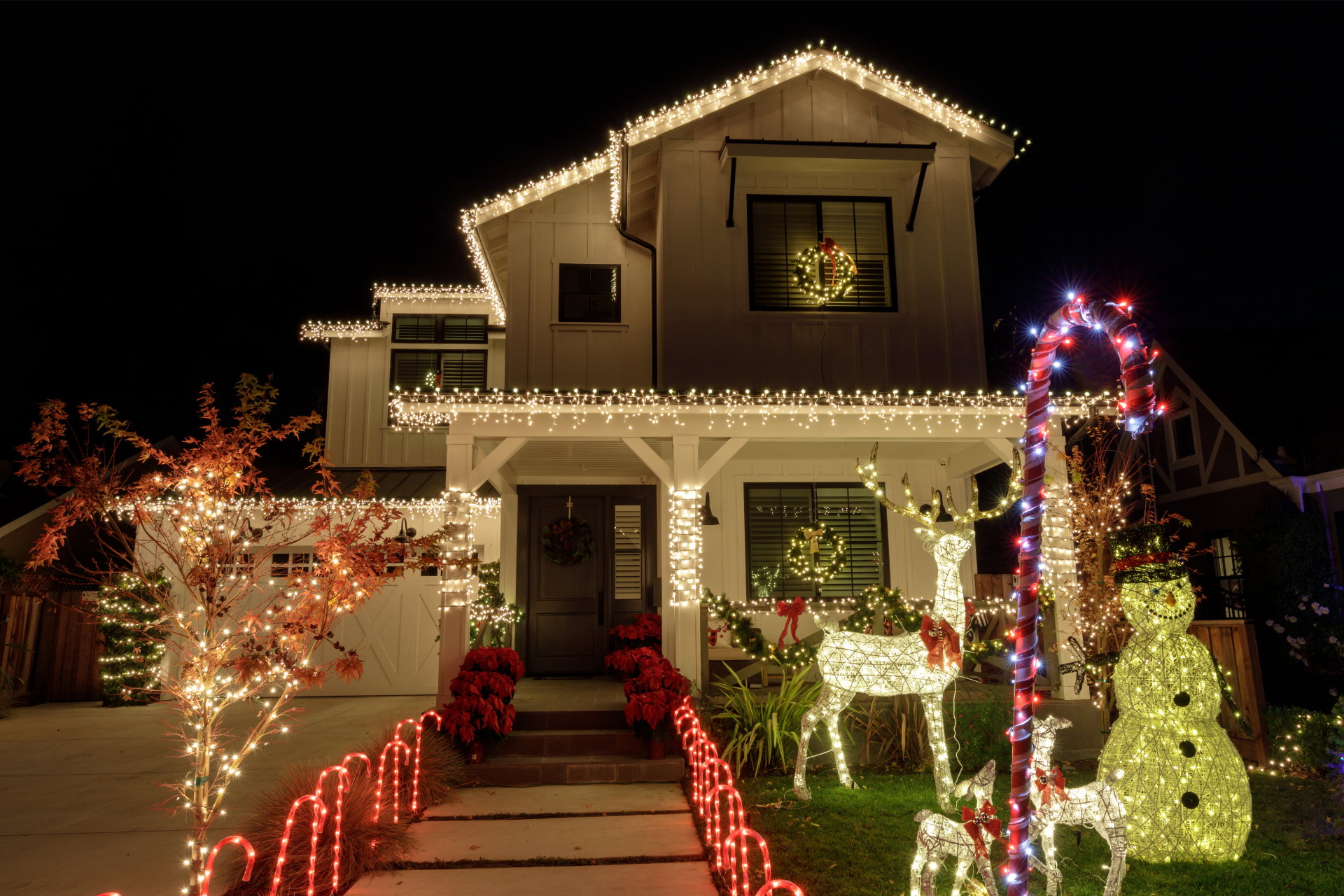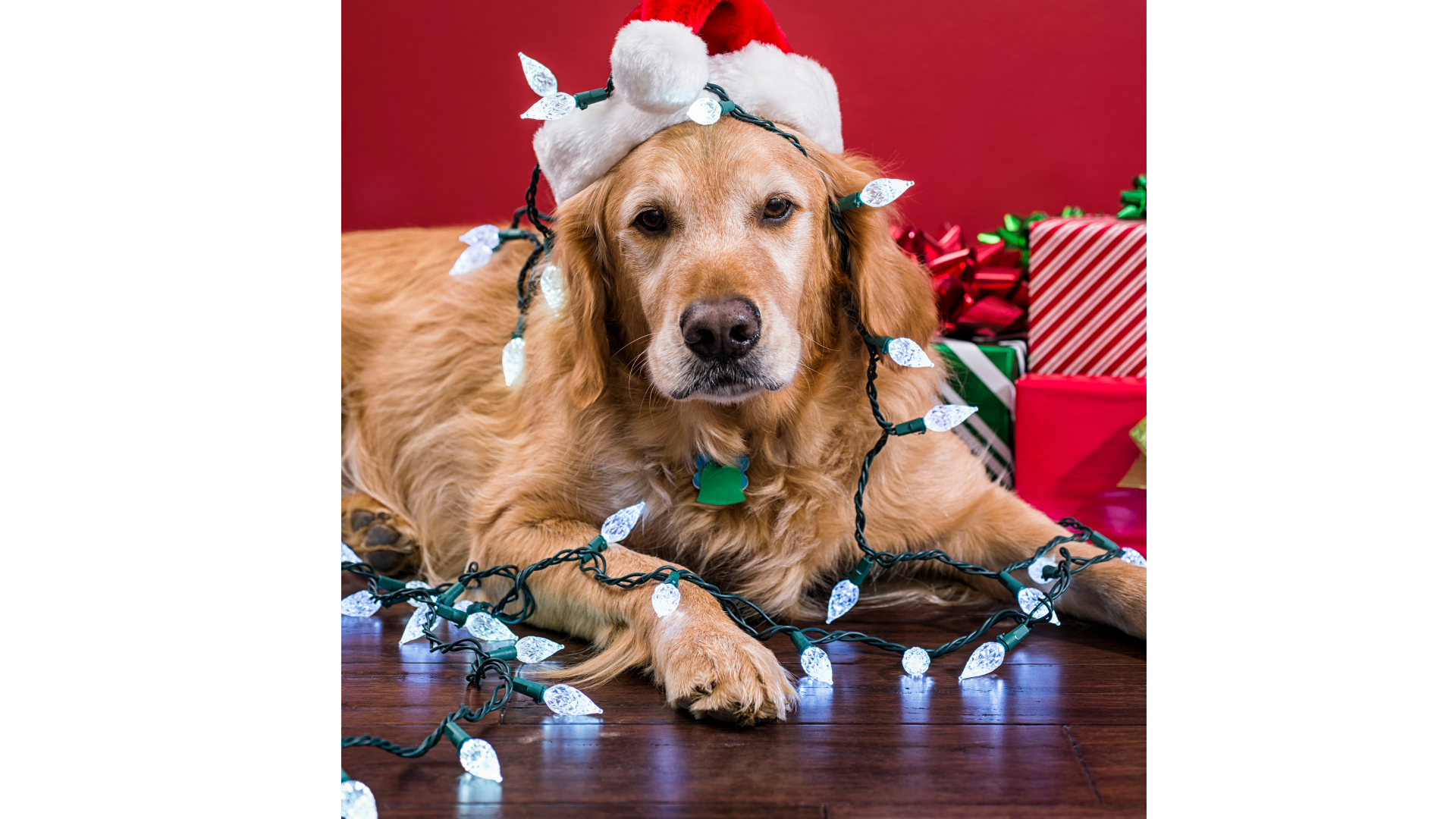
There’s something about stepping outside on a cold December night and seeing a warm glow on every roofline. Long before LEDs and phone apps, families lit candles to make winter feel a little brighter. Fast-forward a few centuries: Edison’s first bulbs, early store-bought strings, the mini-light boom, and now we have LEDs that click on by themselves.
In this blog, we’ll cover the history of Christmas lights, from candles to color-changing LEDs. We'll go over what changed, why it matters, and how to get that classic, cozy look on your own home without climbing a ladder. Grab some cocoa; let’s light it up.
From Candles to Cords
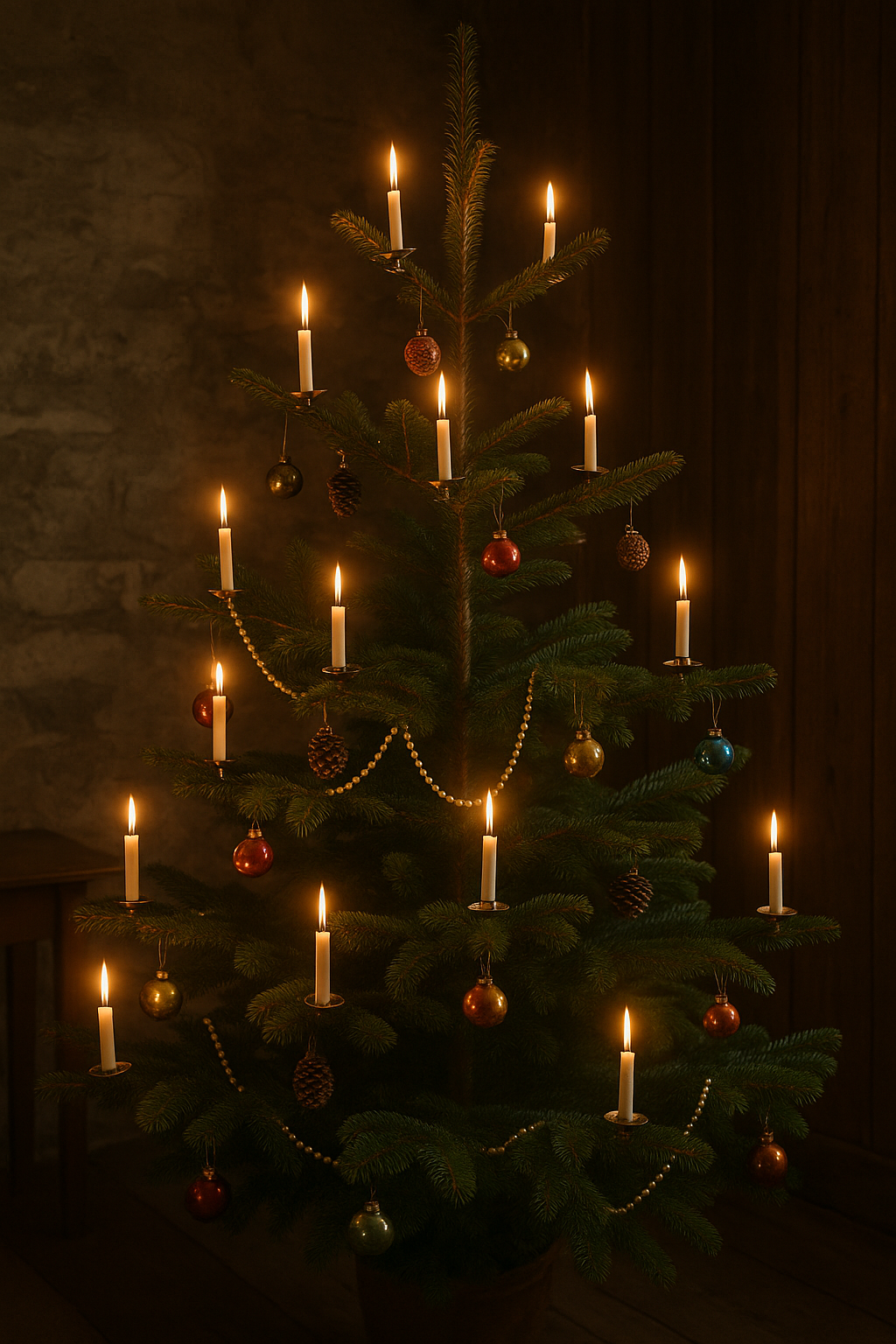
People began lighting Christmas trees with real candles in 17th-century Germany. They were using tallow or wax fixed to branches; it was beautiful, but risky. By 1660 there are written references to candle-lit trees, and inventors later added wax-catching “bobeche” dishes and clip holders (an 1867 patent) to reduce drips and tipping. Families often lit the tree briefly and kept water or sand nearby because fires were common. The danger grew so obvious that by 1908 many insurers in the U.S. refused coverage for Christmas-tree candle fires.
Edison’s Glow & Johnson’s Tree
Thomas Edison became the first to create and display electric Christmas lights in 1880. Edison strung bulbs around his Menlo Park lab so holiday travelers could see them from the train. Two years later on December 22, 1882 his colleague Edward H. Johnson took Edison’s idea indoors and hand-wired 80 red, white and blue bulbs onto a parlor tree in New York. This has become known as the first documented electric Christmas tree.
From Rich Novelty to Normal
Early electric sets looked great but cost a lot and took work. In the 1900s, many families rented lights from department stores or hired an electrician to wire a tree by hand. Bulbs were large, fragile, and sold one by one. A single broken lamp could darken the whole string (annoying).
General Electric helped fix that. GE began selling ready-to-use outfits with safer sockets, standardized bulbs, and screw-in fuses. You could buy a box, take it home, and plug it in. There was no custom wiring and no guesswork. Prices dropped as factories scaled up, and holiday windows in big-city stores showed off the new gear.
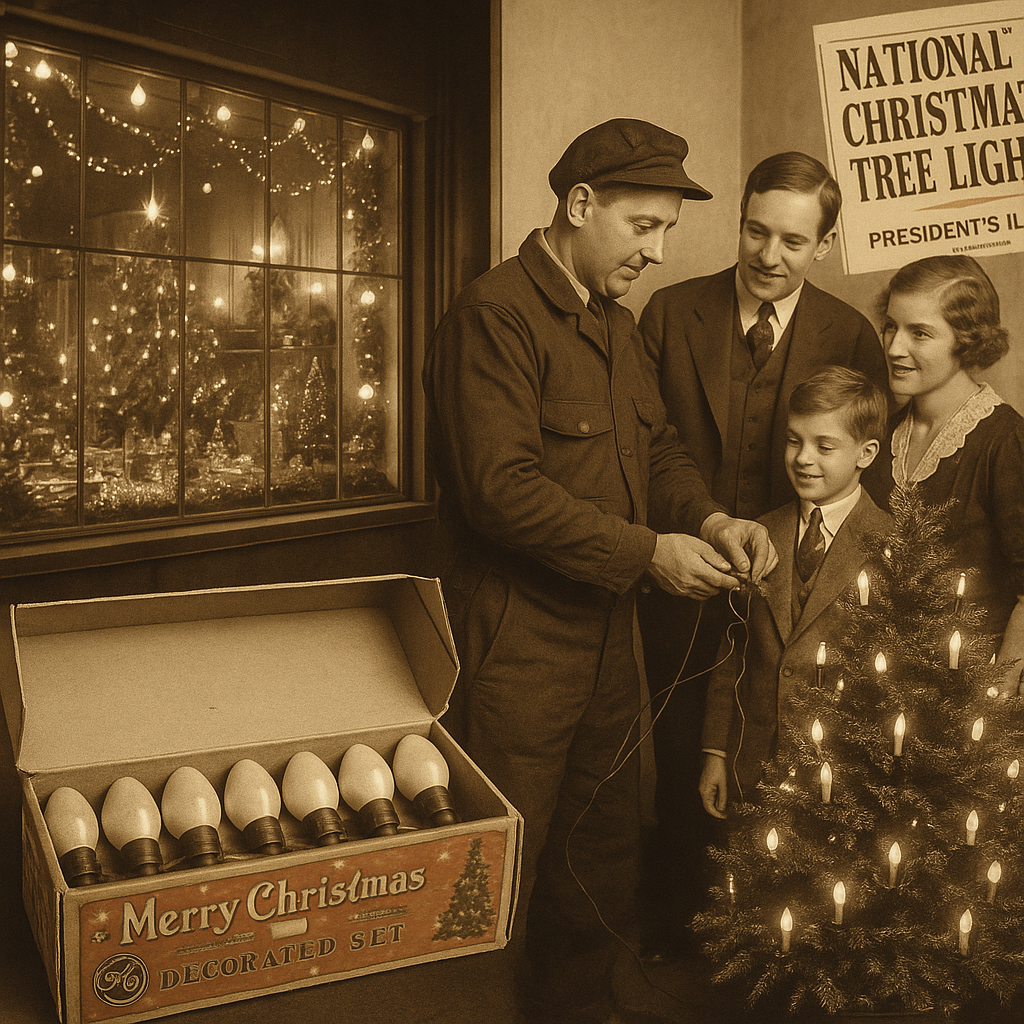
Public displays did the rest. The White House featured an electric tree in 1895, which told the country this was the future. The first National Christmas Tree lighting in 1923 drew crowds and newspaper photos. Cities copied the look on main streets, and by the late 1920s electric lights felt normal in American homes.
NOMA, Safer Sets, and Fun Effects
By the 1920s Albert Sadacca and his brothers organized the National Outfit Manufacturers Association (NOMA Electric) which went on to dominate the U.S. holiday lighting scene for decades. NOMA helped push standardized sockets and wiring plus ready-to-use sets to the masses. This moved the category of Christmas lights from novelty to mainstream.
Thankfully safety took a step forward, too. Underwriters Laboratories began certifying decorative light strings in 1905, and by 1921 UL testing/labels were an established selling point. This is why later sets were safer and more consistent for homes.

And what was the “wow” factor? Bubble lights! Inventor Carl W. Otis patented the design in 1944. NOMA introduced them to the public in 1946, and they stayed popular from the late 1940s through the 70s. They delivered that old-world “candle” vibe minus the flame and danger.
Minis Change The Game
By the 1970s the mini-lights showed up and totally changed the game. They’re the tiny 2.5-volt incandescent bulbs wired in series. A 50-count strand pulls roughly ~25 watts. This was way easier on breakers and budgets than the big old bulbs. Plus if you had cold hands, you could warm them up on the bulbs 😜
Early minis were finicky (one bad bulb could drop a whole section), but modern sets added a little shunt so the rest stay lit while you swap the dud. Prices fell fast as imported sets flooded the market late in the decade. This price drop is why big trees, long rooflines, and full-yard shrubs suddenly became realistic for most homes.
LEDs Take Over
Starting around 1990s–2000s LEDs have taken over. LEDs don’t give off heat like old bulbs. LEDs run cool, sip power and can keep a steady color all season long. Most families see ~70–90% less energy use versus incandescents. Another bonus is way fewer burnt-out bulbs. They’re tougher too; shatter-resistant lenses and solid-state parts—so cold, wet Minnesota nights aren’t a drama. Another perk is that you can usually daisy-chain many more LED strings on one outlet without tripping a breaker. The result? Brighter look, lower bill and a lot more set-and-forget!
Smart, Simple, Set-and-Forget
These days you can set your lights to run themselves. Simple timers and dusk-to-dawn photo sensors flip everything on at sunset and off at sunrise = no daily tinkering. If you want more control, you can go app-based. Many modern sets even let you schedule scenes or change colors from your phone. I'd say we've come a long way since lighting candles on Christmas trees!
How We Use The “New Stuff” Right
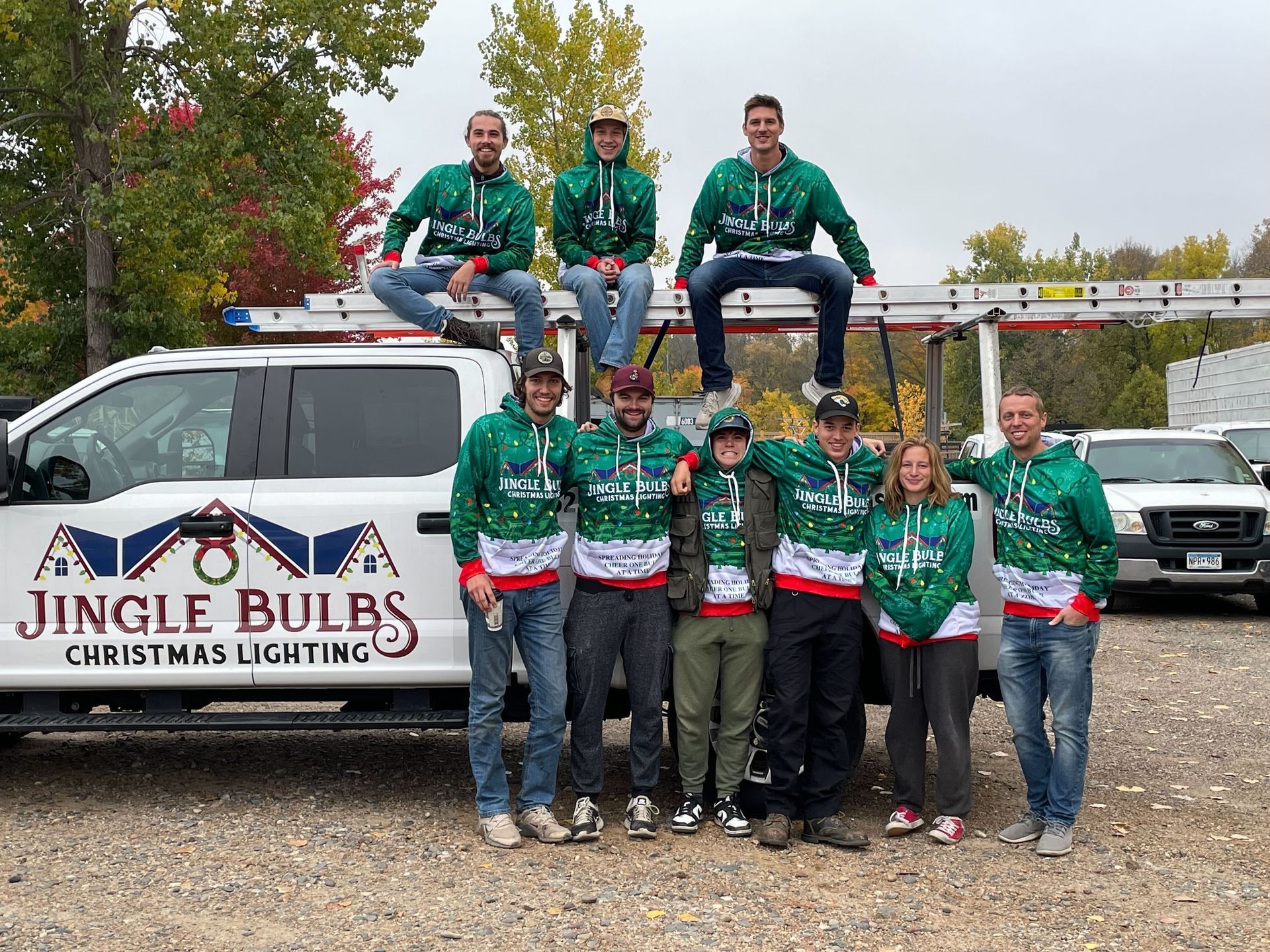
- Commercial-grade LEDs + sealed, outdoor gear.
Our LEDs run cool, last longer, and use ~70–90% less energy than old incandescent strings. They also handle cold weather better. This feature is ideal for Minnesota winters. We pair them with sealed, weather-rated connections (IP-rated hardware) for moisture protection.
- Custom-fit rooflines; clips only (no staples/nails).
We cut lines to fit, hide wire runs, and mount with non-invasive clips to protect shingles, gutters and siding. That’s the pro standard!
- One plan, end-to-end:
design → install → mid-season service → takedown → storage.
We follow UL seasonal-lighting guidance (temporary-use products, up to 90 days installed) and keep everything under one roof so service and warranty are simple.
- Timers & app setup that actually work in the cold.
We configure programmable timers and, when requested, app control. We then plug into GFCI-protected, outdoor-rated outlets/cords per safety best practices.
- Clear power math you can trust.
A typical C9 LED bulb draws ~0.58–1.0 W, so even long rooflines stay efficient and within circuit limits; incandescent C9s use ~7 W each by comparison.
Want the classic look without the ladder?
Get a fast, no-pressure quote and we’ll design your home’s best version—warm white, multicolor, or both.
